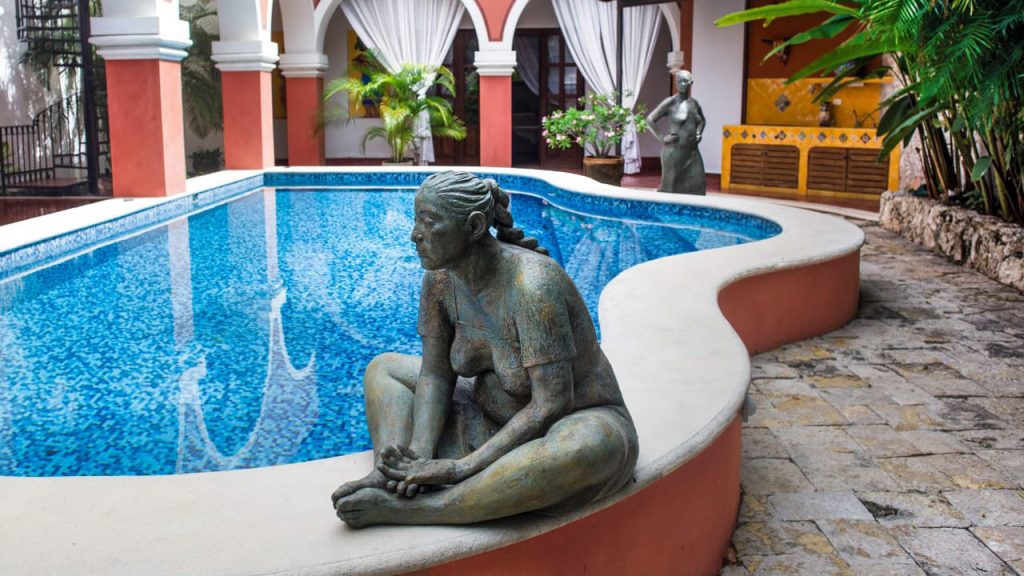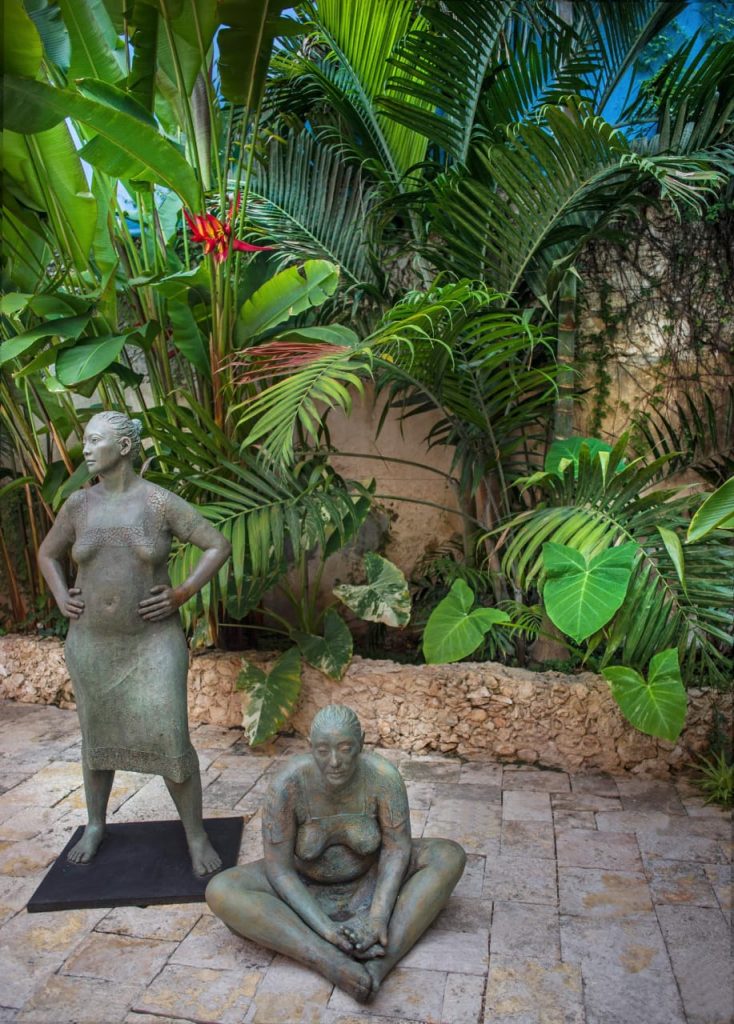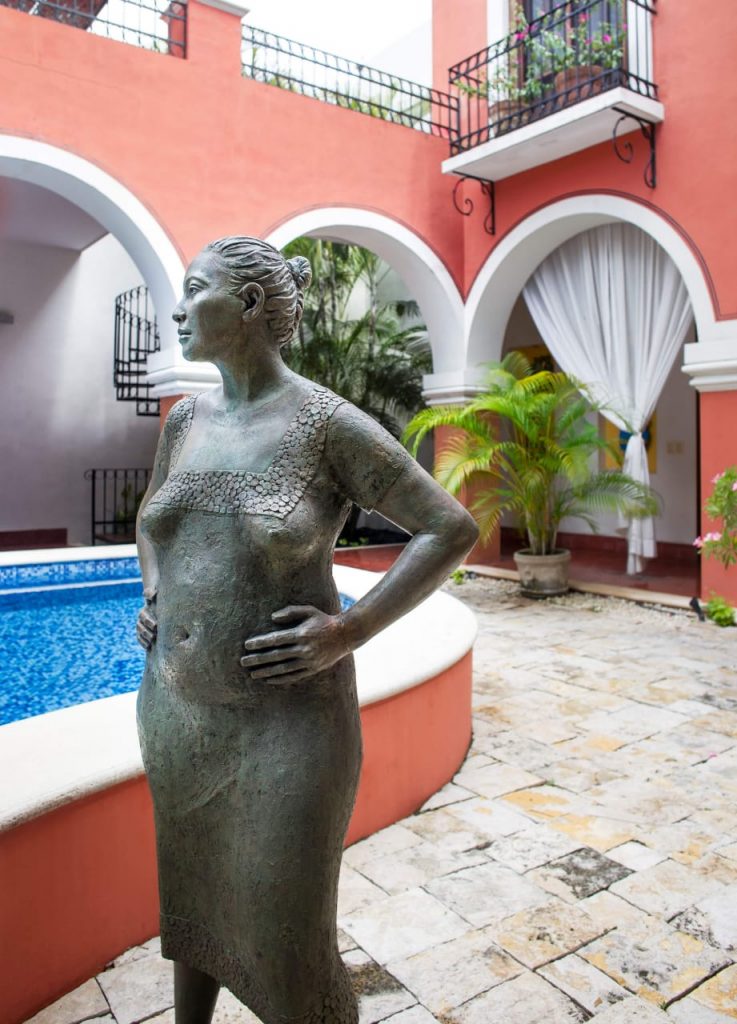The word “mestiza” (half-blood/ half-breed/ mixed-race, used for women) represents, for Yucatan’s culture an emblem of motherhood, home, protection, wisdom and history. It is, for many, the representation of indigenous, strong and hard worker woman whose embroideries are worn by many citizens; a clear example could be the shoes, clothes, bags and accessories that foreigners or even Mexicans use. However, the perception that a common person has about mestizas, is different from the one that an artist could have; this is because artists can see not only the physical aspect of the subject, but also the essence. The mestiza, in this case, depicts a precious and valuable figure by many Mexican artists who respect and portray her more as a cultural identity, rather than a historical symbol.
To Abel, the mestiza is part of his identity. Being himself a member of a mixtecan community (those who reside in Oaxaca), he has been surrounded all his life by indigenous women, whose physical proportions such as wide hips, thick arms and legs, represent the image of how Mexican indigenous women are. This are features that have inspired him to create his sculptures. “I come from an indigenous family, my grandmothers worked on the field, so I see the strength that they have and that’s what I want people to see portrayed” he states.




